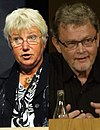| |||||||||||||||||||||||||||||||||||||||||||||||||||||||||||||||||||||||||||||||||||||||||||||||||||||||||||||||||||||||
All 349 seats in the Riksdag 175 seats needed for a majority | |||||||||||||||||||||||||||||||||||||||||||||||||||||||||||||||||||||||||||||||||||||||||||||||||||||||||||||||||||||||
|---|---|---|---|---|---|---|---|---|---|---|---|---|---|---|---|---|---|---|---|---|---|---|---|---|---|---|---|---|---|---|---|---|---|---|---|---|---|---|---|---|---|---|---|---|---|---|---|---|---|---|---|---|---|---|---|---|---|---|---|---|---|---|---|---|---|---|---|---|---|---|---|---|---|---|---|---|---|---|---|---|---|---|---|---|---|---|---|---|---|---|---|---|---|---|---|---|---|---|---|---|---|---|---|---|---|---|---|---|---|---|---|---|---|---|---|---|---|---|---|
| |||||||||||||||||||||||||||||||||||||||||||||||||||||||||||||||||||||||||||||||||||||||||||||||||||||||||||||||||||||||
 Map of the election, showing the distribution of constituency and levelling seats, as well as the largest political bloc within each constituency. | |||||||||||||||||||||||||||||||||||||||||||||||||||||||||||||||||||||||||||||||||||||||||||||||||||||||||||||||||||||||
| |||||||||||||||||||||||||||||||||||||||||||||||||||||||||||||||||||||||||||||||||||||||||||||||||||||||||||||||||||||||
General elections were held in Sweden on 18 September 1994.[1] The Swedish Social Democratic Party remained the largest party in the Riksdag, winning 161 of the 349 seats.[2] Led by Ingvar Carlsson, the party returned to power and formed a minority government after the election. This was the final time the Social Democrats recorded above 40% of the vote before the party's vote share steeply declined four years later and never recovered. The Greens also returned to the Riksdag in the 1994 elections, after a three-year absence.
The election saw the largest bloc differences for a generation, with the red-green parties making sizeable inroads into the blue heartlands of inner Småland and Western Götaland, at an even higher rate than 1988. The Social Democrats gathered more than 50% of the vote in all five northern counties, Blekinge, Södermanland, Västmanland and Örebro.[3]
In spite of the loss of power, the Moderates retained their 80 seats and gained 0.5% from 1991. Due to the sizeable losses of their coalition, the net difference between the blocs was 53, with the red-greens making up 201 and the blue parties 148.[3]
The Christian Democrats fared poorly, merely beating the threshold by 3,752 votes.[3] New Democracy, a right-wing populist political party which had entered the Riksdag three years earlier, performed poorly, losing most of its voters and all of its seats in the Riksdag. In total the party's vote share dropped from 6.7% in 1991 to 1.2% in 1994. The election introduced an extended electoral cycle of four years, replacing the previous three-year terms.
The proportion of women elected to the Riksdag increased from 34% in 1991 to 40%,[4][5] following a campaign by the Stödstrumporna (lit. 'The Support stockings') before the elections.[6]
They were the first elections in the world in which the official results were published live on the nascent internet.[7]
- ^ Dieter Nohlen & Philip Stöver (2010) Elections in Europe: A data handbook, p1858 ISBN 978-3-8329-5609-7
- ^ Nohlen & Stöver, p1873
- ^ a b c "Allmänna valen 1994. Del 1, Riksdagsvalet den 18 september 1994" (PDF) (in Swedish). Statistical Central Bureau. Retrieved 18 November 2019.
- ^ "Elections held in 1991". Inter-Parliamentary Union.
- ^ "Elections held in 1994". Inter-Parliamentary Union.
- ^ Törnqvist, Maria (2019). ”Varannan damernas eller hela makten? Kommentar till Maria-Pia Boëthius, "Krav på kvinnoparti"”. i Klara Arnberg, Fia Sundevall, David Tjeder. Könspolitiska nyckeltexter. Från Det går an till #metoo. p. 422–426
- ^ General aspects of Sweden's electoral system Election Resources






